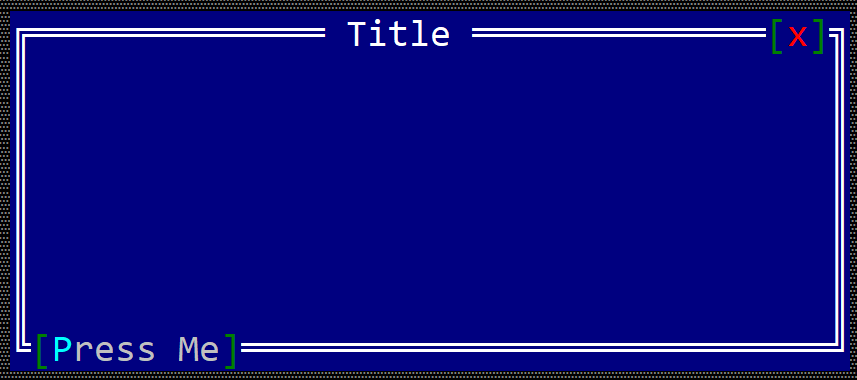Button toolbar item
A toolbar button is a item that can be positioned on the top or bottom part of a windows (like in the following image).

To create a button within a toolbar use the toolbar::Button::new(...) method:
#![allow(unused)] fn main() { let toolbar_button = toolbar::Button::new("content"); }
or the toolbaritem! macro:
#![allow(unused)] fn main() { let toolbar_button_1 = toolbaritem!("content,type=button"); let toolbal_button_2 = toolbaritem!("content='Start',type:button"); let toolbal_button_3 = toolbaritem!("content='&Stop',type:button,tooltip:'a tooltip'"); let toolbal_button_4 = toolbaritem!("content='hidden button',type:button,visible:false"); }
Using the character & as part of the button caption will associate the next character (if it is a letter or number) as a hot-key for the button. For example, the following caption St&art will set Alt+A as a hot-key for the button.
The following parameters are supported for a toolbar button:
| Parameter name | Type | Positional parameter | Purpose |
|---|---|---|---|
text or caption | String | Yes (first postional parameter) | The caption (text) written on the button |
type | String | No | For a button use: type:Button |
tooltip | String | No | The tooltip associated with the button |
visible | Bool | No | true if the toolbar item is visible (this is also the default setting) or false otherwise |
Besides the default methods that every toolbar item has (as described here), the following methods are available for a toolbar label:
| Method | Purpose |
|---|---|
set_caption(...) | Set the new caption for a button. The width (in characters) of the button is the considered to be the number of characters in its content |
caption() | Returns the current caption of a button. |
Events
To intercept button clicks, implement ToolBarEvents for the current window, as presented in the following example:
#![allow(unused)] fn main() { #[Window(events=ToolBarEvents)] struct MyWin { /* data members */ } impl ToolBarEvents for MyWin { fn on_button_clicked(&mut self, handle: Handle<toolbar::Button>) -> EventProcessStatus { // process click events from a toolbar button } } }
Example
The following example creates two buttons on the bottom right part of a window toolbar that can be used to increase the value of a number.
#[Window(events = ToolBarEvents)] struct MyWin { increase_button: Handle<toolbar::Button>, decrease_button: Handle<toolbar::Button>, text: Handle<Label>, number: u32, } impl MyWin { fn new() -> Self { let mut win = MyWin { base: window!("'My Win',a:c,w:40,h:6"), increase_button: Handle::None, decrease_button: Handle::None, text: Handle::None, number: 10, }; // create a group let g = win.toolbar().create_group(toolbar::GroupPosition::BottomRight); // add buttons win.increase_button = win.toolbar().add(g, toolbar::Button::new("+")); win.decrease_button = win.toolbar().add(g, toolbar::Button::new("-")); // add a label win.text = win.add(label!("10,a:c,w:2,h:1")); win } } impl ToolBarEvents for MyWin { fn on_button_clicked(&mut self, handle: Handle<toolbar::Button>) -> EventProcessStatus { match () { _ if handle == self.increase_button => self.number += 1, _ if handle == self.decrease_button => self.number -= 1, _ => {} } let h = self.text; let n = self.number; if let Some(label) = self.control_mut(h) { label.set_caption(format!("{}", n).as_str()); } EventProcessStatus::Processed } } fn main() -> Result<(), appcui::system::Error> { let mut a = App::new().build()?; a.add_window(MyWin::new()); a.run(); Ok(()) }